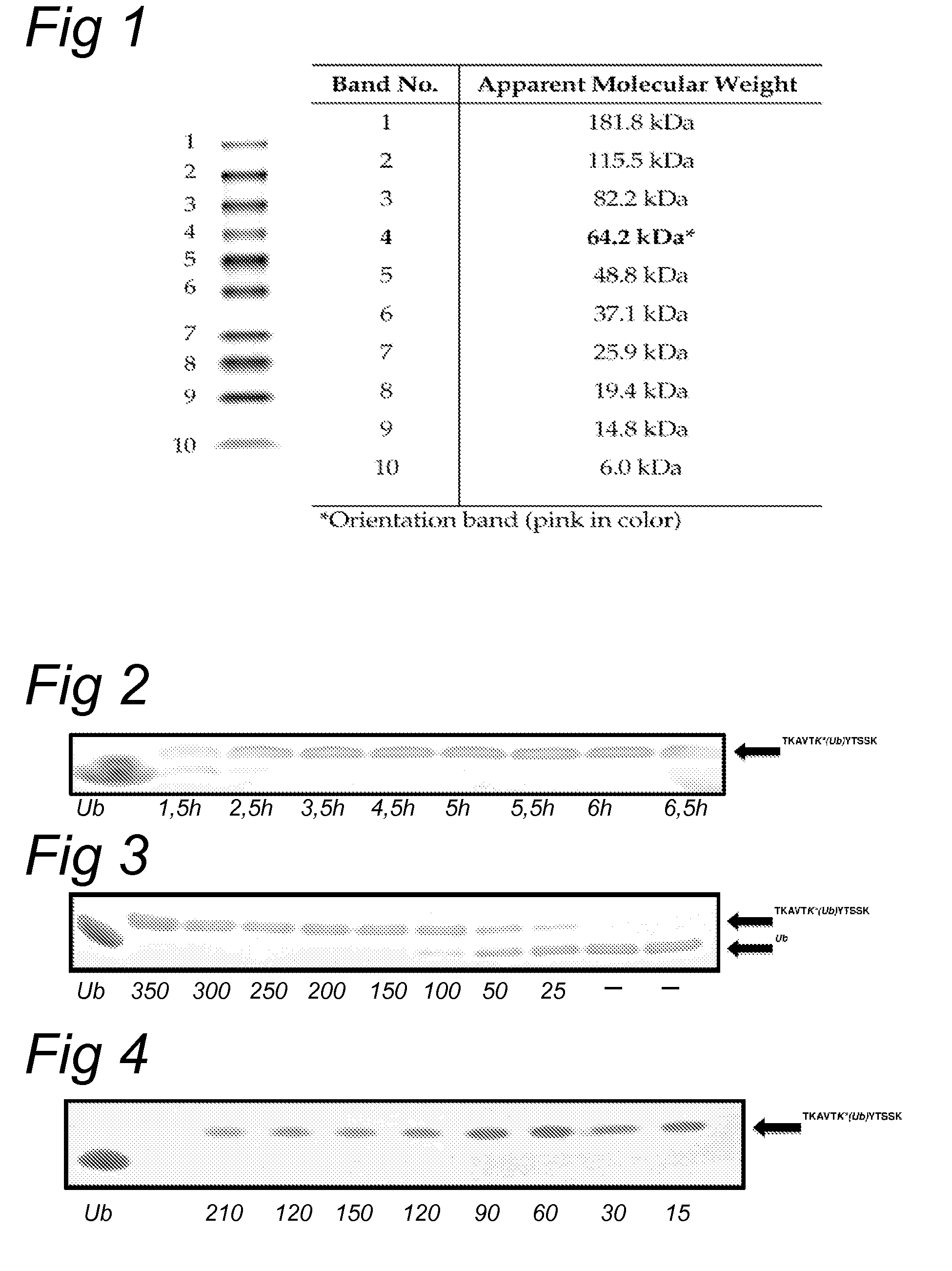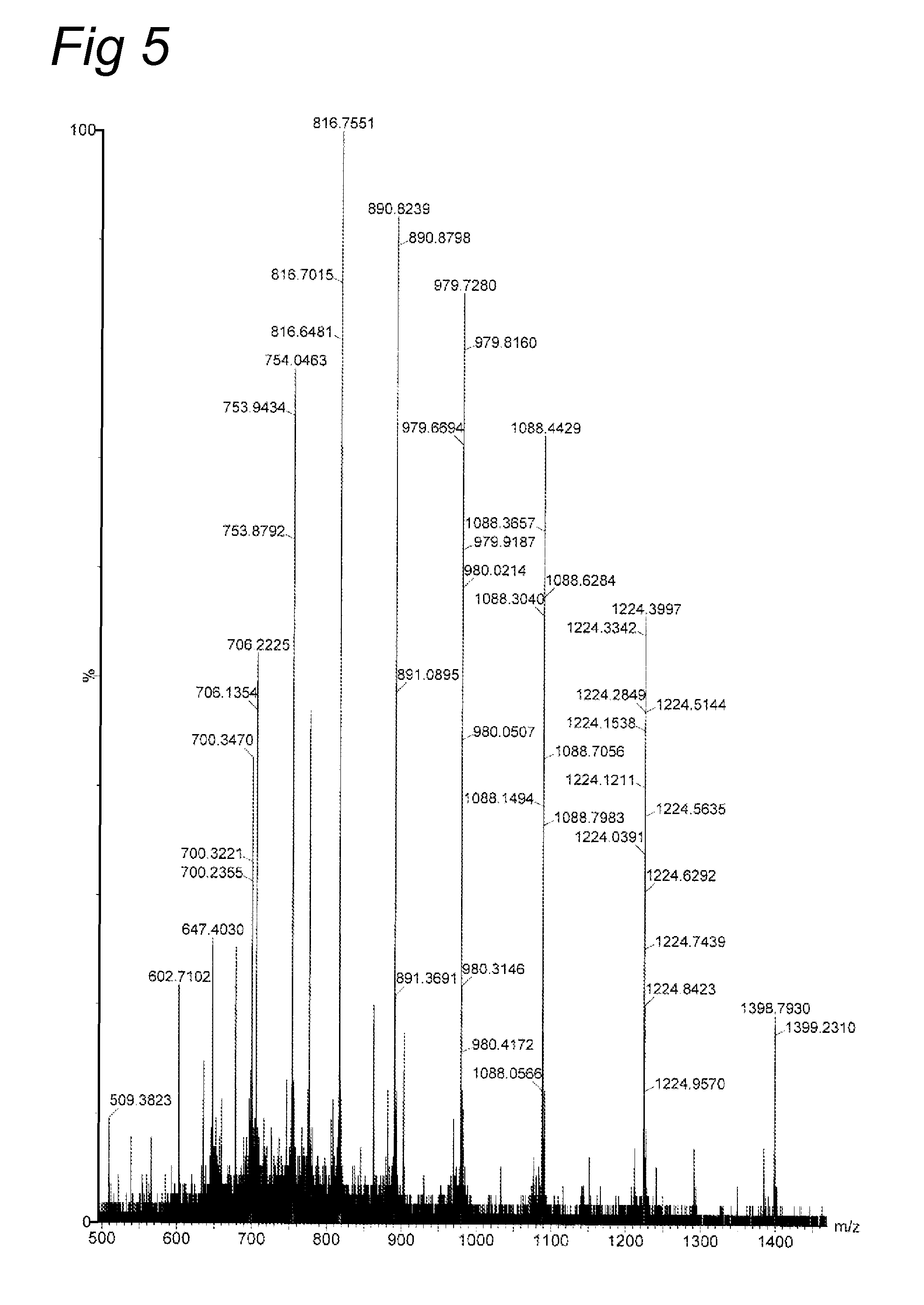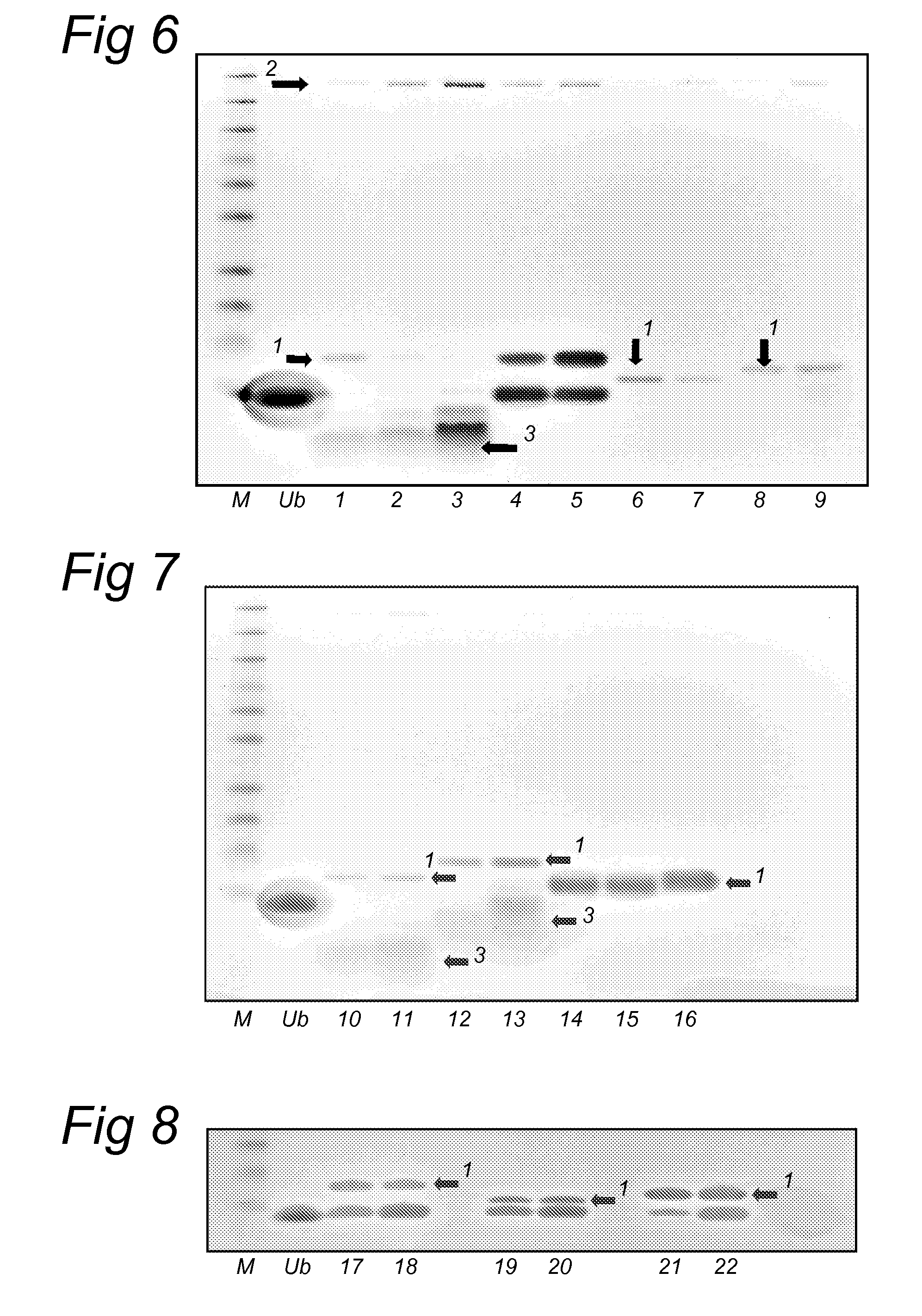Lysine compounds and their use in site- and chemoselective modification of peptides and proteins
a lysine compound and site- and chemoselective modification technology, applied in the field of site- and chemoselective modification of peptides and proteins, can solve the problems of reducing the activity of lysine compounds, difficult to develop robust methods for selectively modifying proteins or peptides, and generally non-specific labelling, etc., to achieve fast, flexible and economical effects
- Summary
- Abstract
- Description
- Claims
- Application Information
AI Technical Summary
Benefits of technology
Problems solved by technology
Method used
Image
Examples
example 1
Synthesis δ-thiolysine Building Blocks DL-3.4 and L-3.4
[0098]
Nε-tert-Butoxycarbonyl-5-hydroxy-DL-lysinato-bicyclononylboron (DL-3.1)
[0099]Ammonia solution (aq. 50 mL) was added to (5RS)-5-hydroxy-DL-lysine hydrochloride (5 g, 25.2 mmol) at 0° C. After stirring for 30 min the solution was concentrated and the crystalline solid was dried in high vacuum before further use. The solid was added in one portion to a stirred solution of 9-BBN (7.00 g, 28.8 mmol) in hot methanol (100 mL). The reaction mixture was refluxed (ca. 3 h) under nitrogen until a clear solution was obtained. After evaporation of the solvent, the residue was dissolved in 1,4-dioxane / water (1 / 1 v / v, 50 mL), cooled in an ice-bath and treated with NaHCO3 (2.5 g, 29.8 mmol) and Boc2O (5.5 g, 25.2 mmol). After stirring overnight, the reaction mixture was concentrated, diluted with brine and extracted with EtOAc. After drying the organic layer and concentration, the crude product was purified over silica gel (n-hexane / EtOAc...
example 2
Solid Phase Synthesis of Peptides Modified with DL-3.4 and (O-Nitrobenzyl)-Cysteine
[0111]Peptides were synthesized on a Syro II MultiSyntech Automated Peptide synthesizer by standard 9-fluorenylmethoxycarbonyl (Fmoc-) based solid phase peptides chemistry on a 25 or 50 μmol. Starting with the pre-loaded Fmoc amino acid Wang resin (0.2 mmol / g), each successive amino acid was coupled in 4 molar excess for 45 min with pyBOP and DiPEA. Deprotection of the Fmoc-group was achieved with 20% piperidine in NMP (3×1.2 mL, 2×2 and 1×5 min). Peptides were cleaved with TFA / iPr3SiH / H2O (95 / 2.5 / 2.5) and precipitated in cold n-hexane / diethyl ether. Purifications were performed on a Waters 1525EF Binary HPLC using an Atlantis (Waters, 19×250 mm, 10 μM) preparative column. Flow rate=1.4 mL / min, mobile phases: A=0.05% aq. TFA and B═CH3CN in 0.05% aq. TFA. Column T=20° C. Gradient: 0.0-1.0 min: 1% B; 1.0-11.0 min: 1% B90% B; 11.0-14.0 min: 90% B; 14.0-15.0 min: 90% B95% B; 15.0-23.0 min: 1% B.
[0112]
[011...
example 3
Site- and Chemoselective Ubiquitination of Peptides Using the Traceless Lysine Building Block δ-Thiolysine
General Protocol Ubiquitin Ligation of 5-Thiolysine Modified Peptides.
Stock solutions reagents:
[0114]200 mM MgCl2
[0115]0.5 M ATP
[0116]2.0 M MESNa
[0117]10 mg mL ubiquitin in 50 mM Tris-HCl (pH 7.5)
[0118]71 μM E1 and 7.1 μM (by diluting first stock 10×) in milliQ
Stock Solutions Peptides:
[0119](0) Peptide TKAVTK*YTSSK: 20 mM in milliQ or 50 mM Tris-HCl (pH 7.5)
[0120](1) 155GDAWISC*AK*DGVKFSASGELGNGNIKLSQ184: 5.0 mM in DMF or DMSO
[0121](2) 161SC*AK*DGVK168: 500 μM in 50 mM Tris-HCl (pH 7.5)
[0122](3) 1MTAIIKEIVSRNK*RRYQED19: 500 μM in 50 mM Tris-HCl (pH 7.5)
[0123](4) 286TSEK*VENGSLC*DQEIDSIC*SIERA399: 500 μM in 50 mM Tris-HCl (pH 7.5)
[0124](5) 365HLK*SKKGQSTSRHKKLMFKTEG389: 1000 μM in 50 mM Tris-HCl (pH 7.5)
[0125](6) 365HLKSK*KGQSTSRHKKLMFKTEG389: 1000 μM in 50 mM Tris-HCl (pH 7.5)
[0126](7) 365HLKSKK*GQSTSRHKKLMFKTEG389: 1000 μM in 50 mM Tris-HCl (pH 7.5)
[0127](8) 365HLKSKKGQSTSRHK*...
PUM
| Property | Measurement | Unit |
|---|---|---|
| pH | aaaaa | aaaaa |
| mass | aaaaa | aaaaa |
| mass | aaaaa | aaaaa |
Abstract
Description
Claims
Application Information
 Login to View More
Login to View More - R&D
- Intellectual Property
- Life Sciences
- Materials
- Tech Scout
- Unparalleled Data Quality
- Higher Quality Content
- 60% Fewer Hallucinations
Browse by: Latest US Patents, China's latest patents, Technical Efficacy Thesaurus, Application Domain, Technology Topic, Popular Technical Reports.
© 2025 PatSnap. All rights reserved.Legal|Privacy policy|Modern Slavery Act Transparency Statement|Sitemap|About US| Contact US: help@patsnap.com



